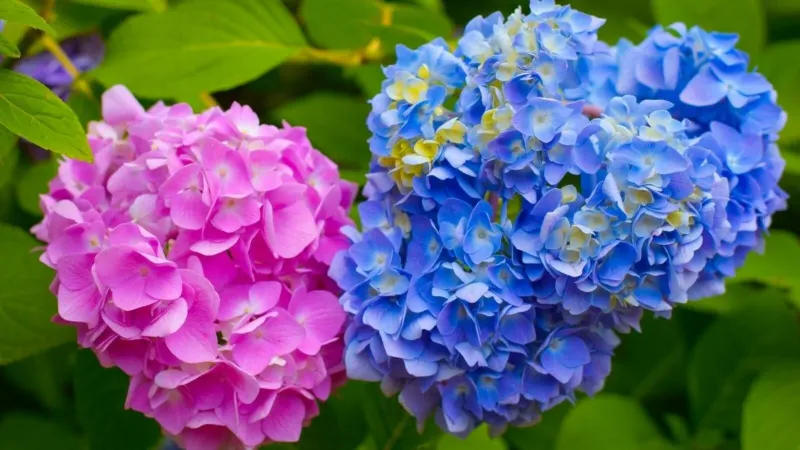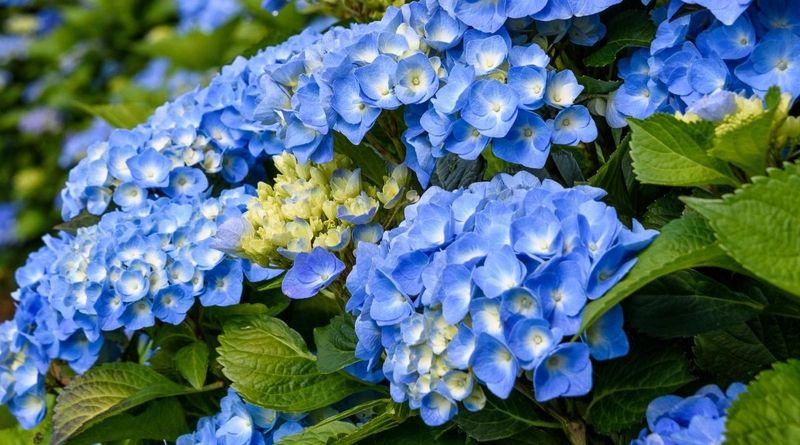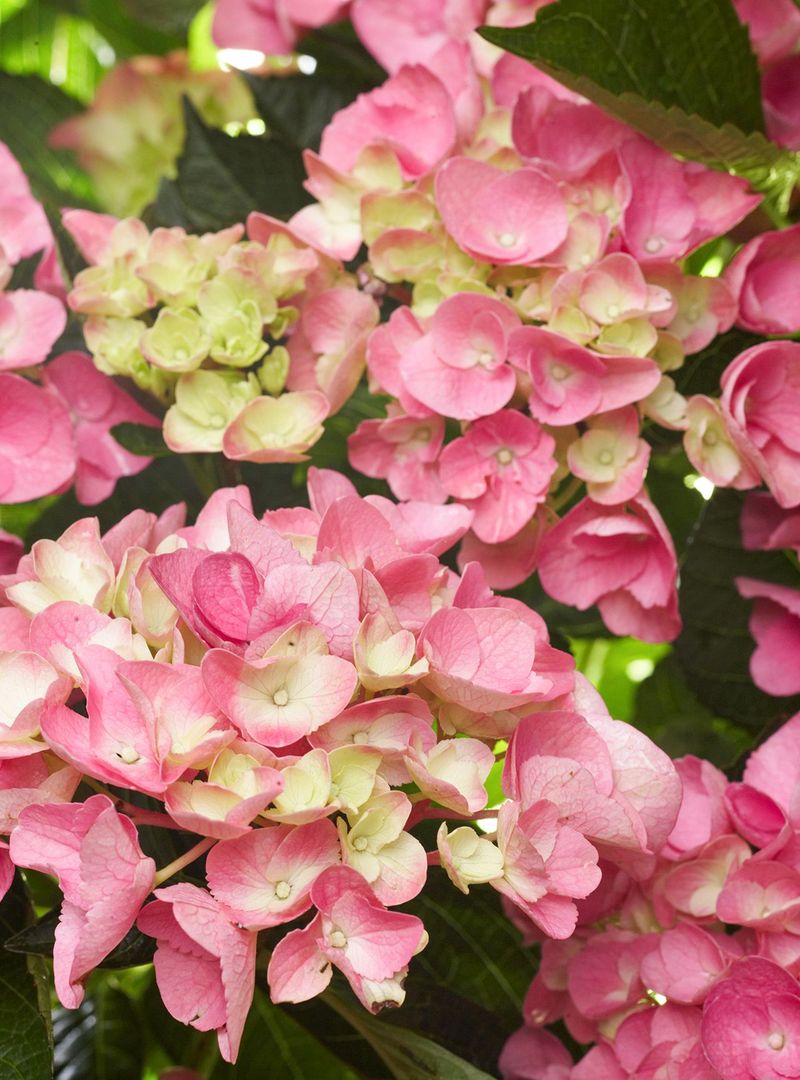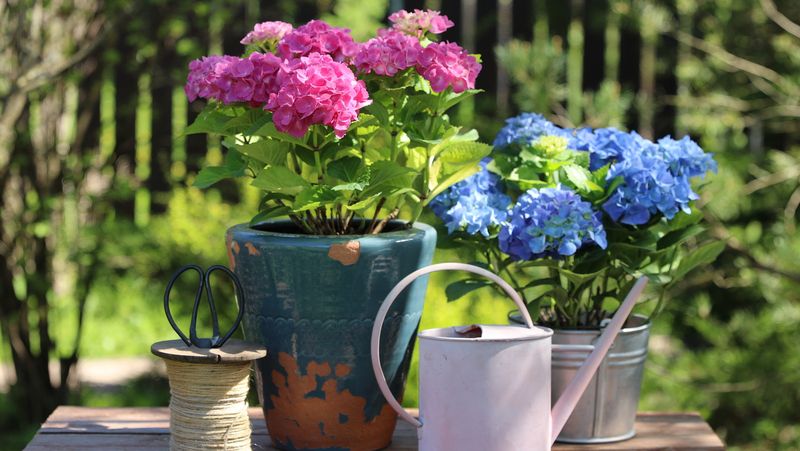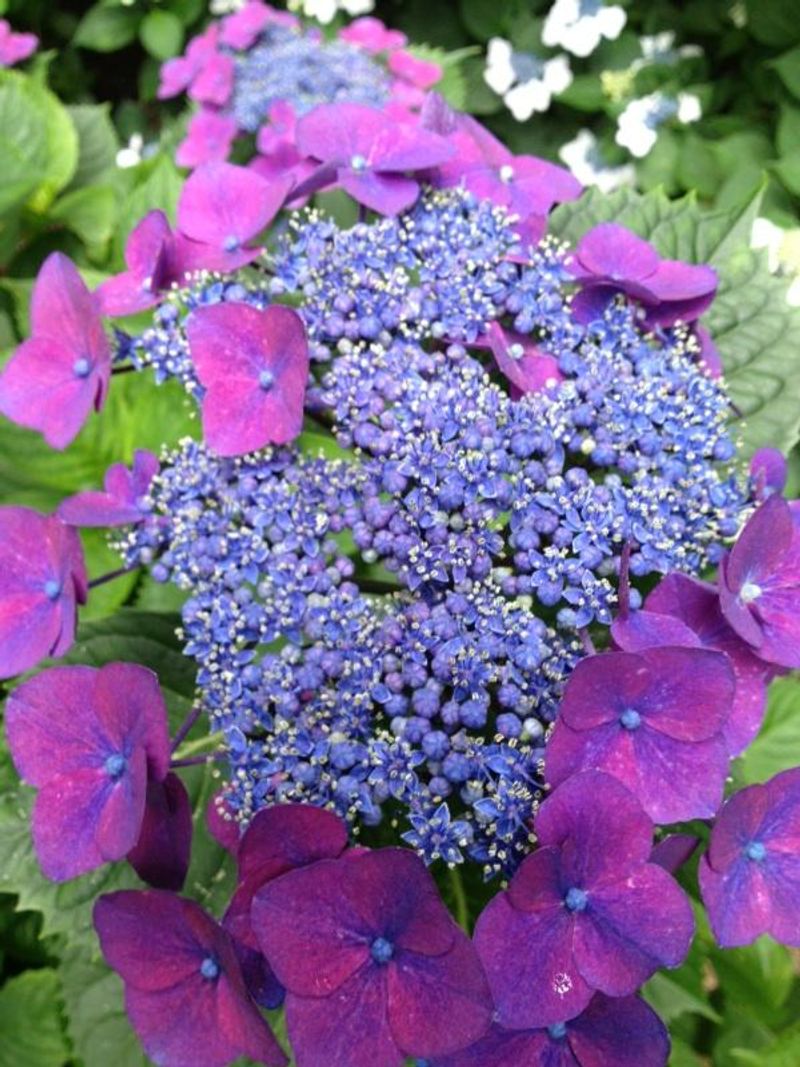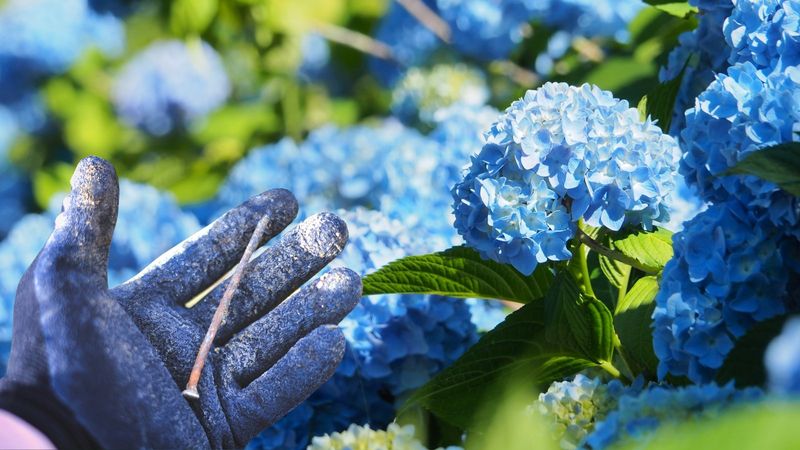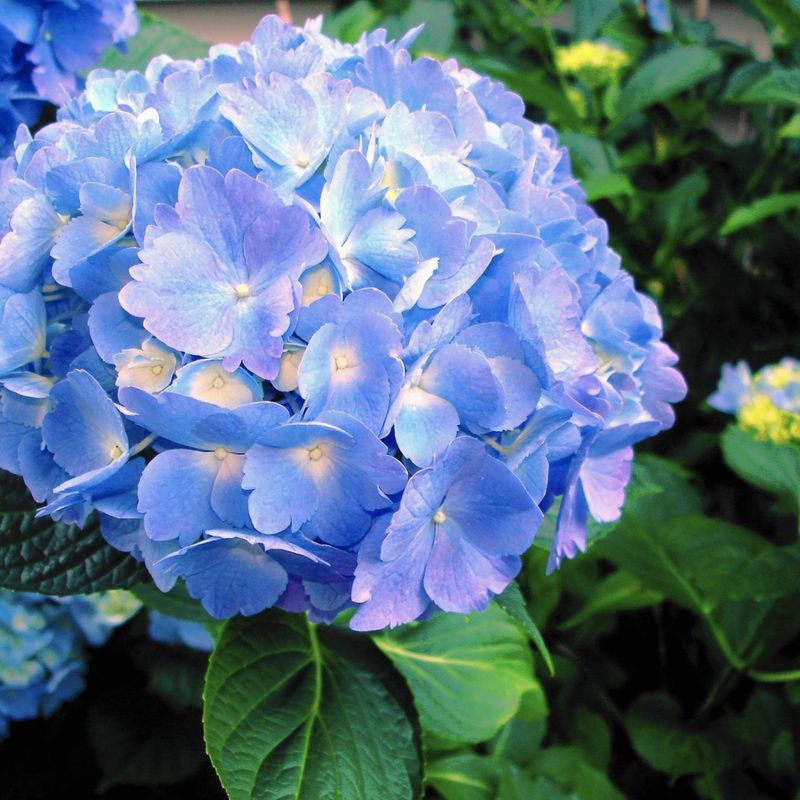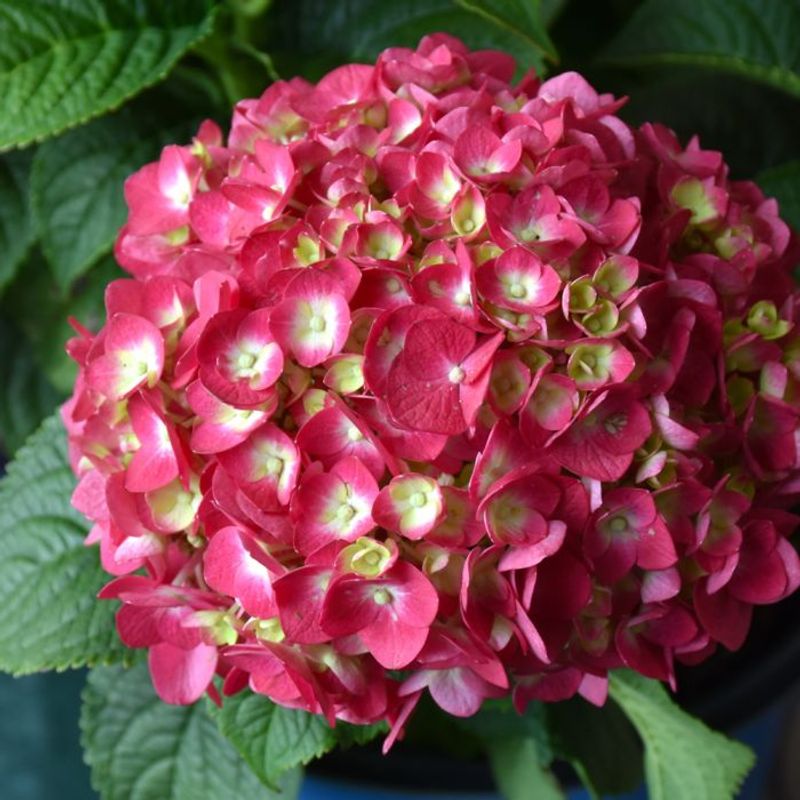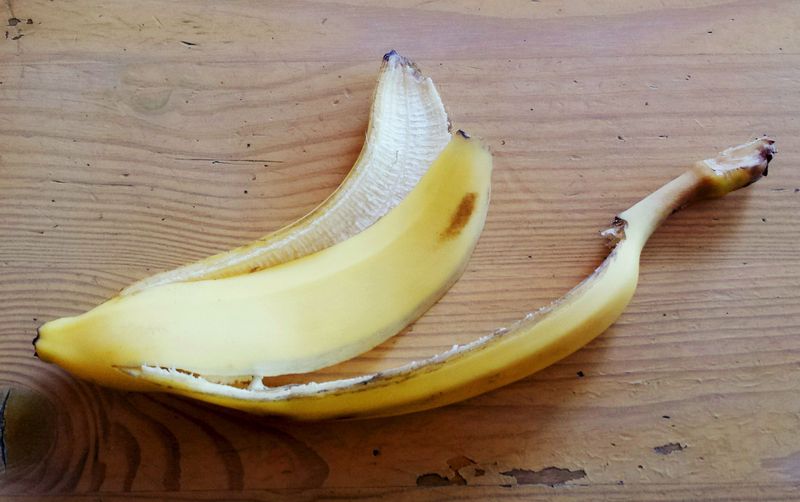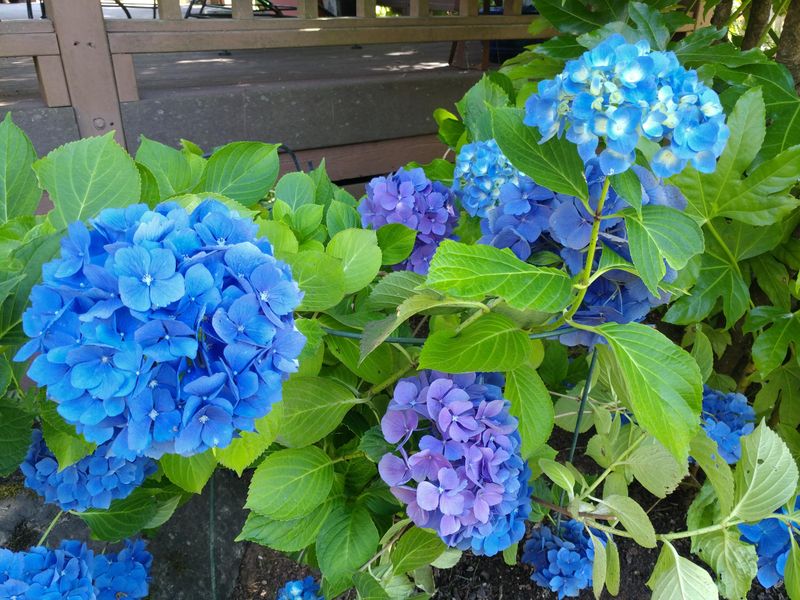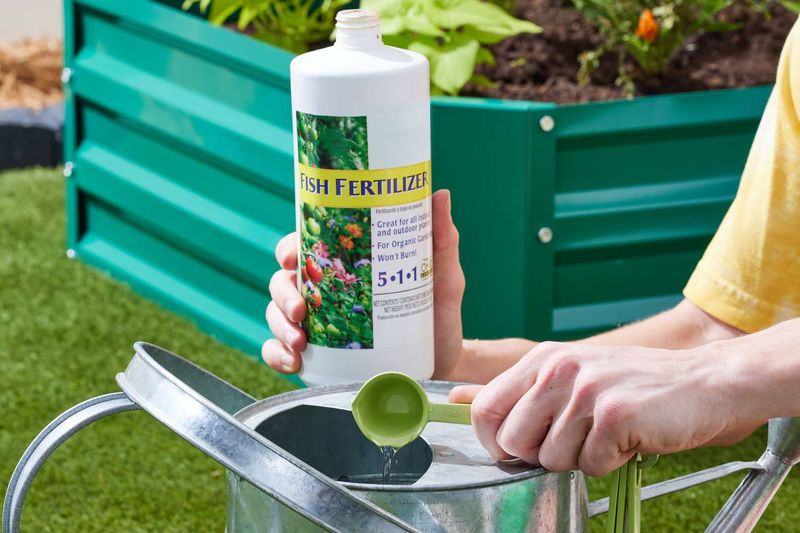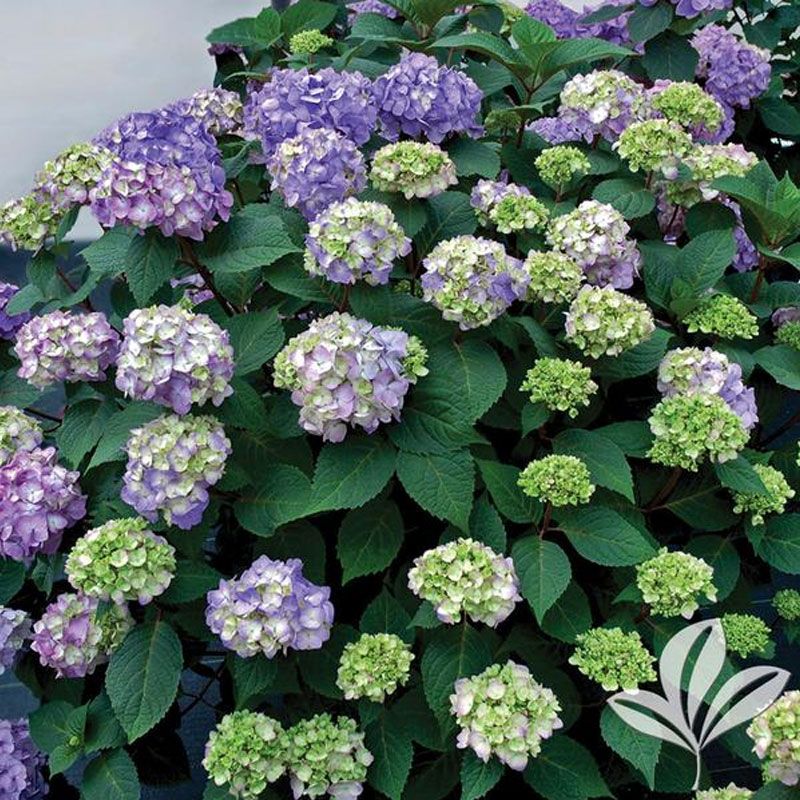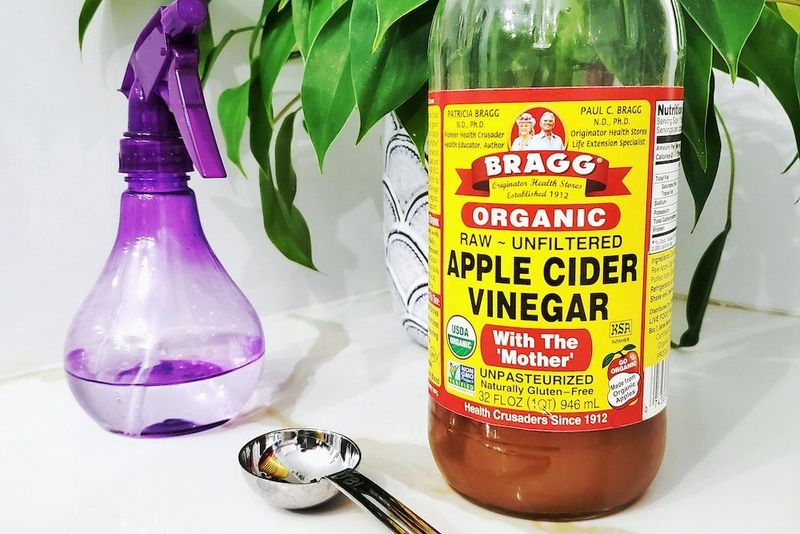Playing with the color of hydrangeas feels a bit like magic, but it’s actually all about science—and the best part is, you don’t need to reach for any harsh chemicals to do it. With a few natural tweaks to your soil, you can shift your hydrangeas from soft pinks to dreamy blues (or even land somewhere in between), all while keeping your garden eco-friendly and thriving.
If you’ve ever wished your pink blooms would turn blue—or vice versa—you’re not alone. Many gardeners find it both fun and satisfying to experiment with these changes. And once you understand how soil pH and certain minerals influence hydrangea color, the process becomes surprisingly simple.
So, here are some natural ways to encourage color changes in your hydrangeas. We’ll talk about little changes with big, beautiful results. Let’s see what hues your hydrangeas can bloom into this season.
1. Aluminum Sulfate
Soil pH plays a crucial role in determining hydrangea color. Aluminum sulfate can help in lowering the pH, resulting in blue blooms. Mix it into the soil carefully to avoid root damage. This method is effective but requires precision.
Start by testing the soil pH; if it’s too alkaline, aluminum sulfate might be your answer. The compound works best when the soil’s pH level is between 5.2 and 5.5. Incorporate it into your regular watering routine for gradual results.
Remember to follow instructions meticulously to prevent any negative impact on the plant’s health.
2. Coffee Grounds
Coffee grounds are a well-loved natural remedy for adjusting soil acidity. When sprinkled around your hydrangeas, they can lower the soil’s pH, encouraging blue hues. It’s an eco-friendly option many gardeners swear by.
Simply collect used coffee grounds and scatter them around the base of your hydrangeas. Over time, they break down, enriching the soil while subtly shifting the color of the blooms.
This method is gradual and requires patience. Monitor the pH levels periodically to ensure you’re on the right track without overdoing it.
3. Eggshells
Eggshells can raise the soil’s pH, promoting pink blooms. Crush them finely to ensure they decompose quickly. This method is natural and adds calcium to the soil, benefiting plant health.
After cleaning and drying the shells, crush them into small pieces and mix them into the top layer of soil. Over time, this will gently raise the pH, favoring pink hues.
Consistency is key here, as changes occur gradually. Using eggshells is a simple, sustainable way to influence hydrangea colors without synthetic chemicals.
4. Vinegar Watering
Diluted vinegar can be used to lower soil pH, promoting blue hydrangea blooms. It’s an accessible option for many gardeners. However, use it sparingly to avoid damaging plants.
Mix one tablespoon of vinegar with a gallon of water and apply it to the soil every few weeks. This method is perfect for gardeners looking for a quick adjustment.
Be cautious, as too much vinegar can harm the plant. Monitor the changes and adjust the application frequency as needed. Always aim for balance.
5. Compost Tea
Compost tea enriches the soil, potentially affecting hydrangea bloom color. It’s a sustainable way to nourish your garden. A robust compost tea can slightly lower soil pH, nudging blooms towards blue.
Brew compost tea by steeping mature compost in water for a few days. Strain the liquid and use it to water your hydrangeas. This technique also improves soil health, promoting vigorous growth.
The effects on color are subtle but worthwhile, especially when combined with other methods. Regular application results in a well-nurtured garden.
6. Mulching With Pine Needles
Pine needles can lower the soil’s pH, supporting blue hues in hydrangeas. This method is as natural as it gets, offering a dual benefit of color change and moisture retention.
Spread a thick layer of pine needles around the base of the hydrangea plants. As they decompose, they acidify the soil, gradually shifting bloom color.
This approach is perfect for those who appreciate low-maintenance gardening. It provides a gentle, long-term solution without the need for synthetic chemicals.
7. Rusted Nails
These are a quirky but effective method to lower soil pH. The rust releases iron, influencing hydrangea bloom color towards blue. It’s an unusual but remarkable choice.
Bury a few rusted nails around the base of your hydrangea. Over time, they release iron, gradually altering the soil’s composition.
This method requires patience, as it takes a while to notice changes. However, it’s a fascinating way to recycle materials in your garden. Ensure nails are placed deep enough to avoid injury while gardening.
8. Epsom Salts
Epsom salts can enhance hydrangea colors by enriching the soil with magnesium. It’s a gentle way to encourage purple hues. This method also supports overall plant health.
Dissolve a tablespoon of Epsom salts in a gallon of water and apply it to the soil every few weeks. The magnesium boost can enhance both color and growth.
Regular application is key to seeing results. This approach is perfect for gardeners looking for simple and effective ways to adjust bloom colors naturally.
9. Charcoal Ash
This can raise soil pH, promoting pink blooms in hydrangeas. It’s a natural way to recycle and amend soil. The ash provides potassium, benefiting plant health.
Sprinkle charcoal ash sparingly, ensuring it doesn’t overwhelm the soil. Mix it into the top layer for best results. This method is gradual and should be used in conjunction with regular gardening practices.
Monitor soil pH to ensure you’re on the right track. This method is ideal for those looking to balance color change with sustainability.
10. Banana Peels
Banana peels add potassium to the soil, gently raising pH and promoting pink hydrangea blooms. It’s a simple, organic approach many gardeners enjoy.
Bury fresh banana peels at the base of your hydrangea plants. As they decompose, they release nutrients, subtly influencing the color of blooms.
This method is perfect for those looking for an easy, eco-friendly solution. It complements other soil amendments, offering a balanced approach to natural gardening.
11. Wood Chips
This mulch option is both decorative and functional, offering a natural way to influence bloom color. Wood chips can lower soil pH, supporting blue hues in hydrangeas.
Spread a layer of wood chips around the base of your hydrangeas. As they break down, they gently acidify the soil over time.
This method enhances garden aesthetics while providing practical benefits. It’s a straightforward solution that blends beauty with function, appealing to gardeners of all levels.
12. Lemon Juice
This can be used to lower soil pH, encouraging blue hydrangea blooms. It’s a quick and accessible solution for gardeners. However, use it sparingly to prevent harm.
Mix a tablespoon of lemon juice with a gallon of water and apply it to the soil periodically. The acidity can help adjust bloom color effectively.
This method requires careful monitoring. Too much lemon juice can harm the plant, so balance is crucial. It’s a handy option for small, manageable gardens.
13. Fish Emulsion
Fish emulsion, rich in nutrients, can subtly influence hydrangea bloom colors. It’s an organic option that also boosts overall plant health. The nitrogen content can favor blue hues.
Dilute fish emulsion in water according to package instructions and apply it to the soil around your hydrangeas. This method not only tweaks color but also promotes vigorous growth.
Regular application is needed for noticeable changes. It’s a balanced approach to color adjustment, combining nutrition with natural gardening practices.
14. Rainwater
Naturally soft and slightly acidic, this one can aid in maintaining or achieving blue hydrangea blooms. Collecting and using rainwater is an eco-friendly solution.
Set up a rain barrel to catch water from gutters. Use this water regularly on your hydrangeas to subtly affect soil pH. It’s a sustainable method that aligns with natural cycles.
This approach requires no additional materials, making it an accessible option for many. It encourages gardeners to work with nature, fostering both beauty and sustainability.
15. Apple Cider Vinegar
A natural way to lower soil pH, encouraging blue blooms in hydrangeas. It’s a simple, household ingredient many can use. However, it should be applied cautiously.
Mix one tablespoon of apple cider vinegar with a gallon of water and apply it to the soil every few weeks. This method offers a gradual change, perfect for persistent gardeners.
Keep an eye on soil pH to avoid over-acidification. It’s a manageable way to subtly influence hydrangea colors without resorting to synthetic chemicals.


